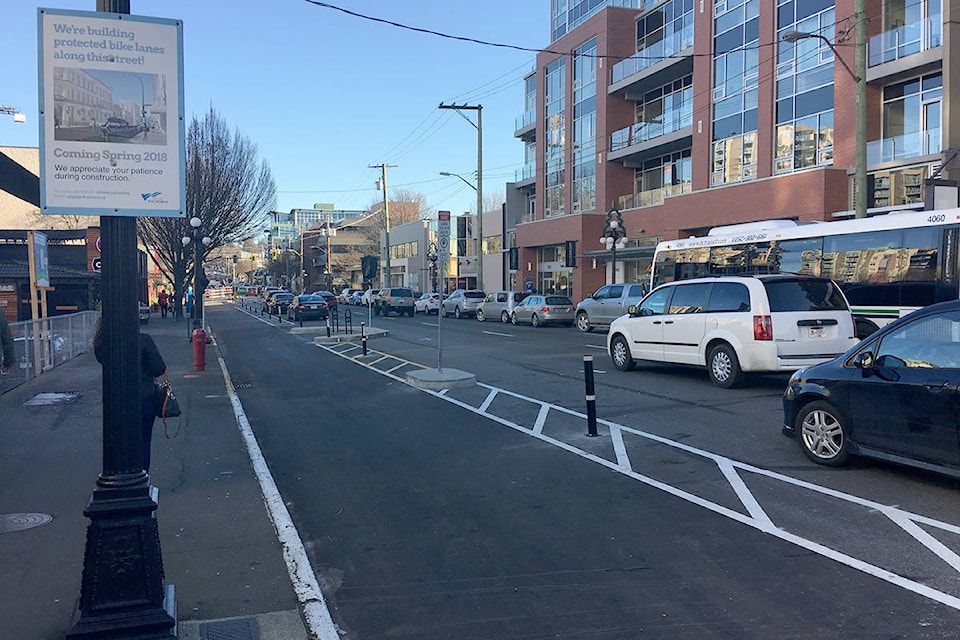I am befuddled by the sheer number of people who think cycling will increase congestion. Yes, bike lanes take up space and yes they cost money, but nowhere near as much as roads.
You see, cycling is like a laxative for roads. It reduces congestion, frees up parking spaces and costs less in the long run. It only takes common sense to realize that since bikes are smaller, they will take up less space on the road and off the road.
And cyclists aren’t costing the government loads of money because they are “freeloaders” that “don’t pay their own way.” Drivers and cyclists pay taxes and some of those go towards roads. Drivers cost the government far more than they pay for in gas, taxes and insurance. Cyclists, on the other hand, actually fund the system; what road damage can a simple bike do?
Now, the elephant in the room: Money. Yes the bike lanes are costing a lot of money, but nowhere near as much as car infrastructure does. Take a look at the easternmost block of Pandora Avenue; tell me that it isn’t more lively since the bikes lanes went in. I’ve read a book or two, and I can tell you that cycling always positively affects businesses. Drivers have tunnel vision and will head for the mall. Cyclists stop at local stores, and support the local economy.
Last but certainly not least, safety. The number of people killed by cars globally every day is somewhere around 9,000. Cycling is far safer, because people are going slower and have much greater sightlines, and most cycling accidents involve a car. Would you trust the safety of your family to the burden that is the car?
Finn Kreischer, age 14
Victoria



